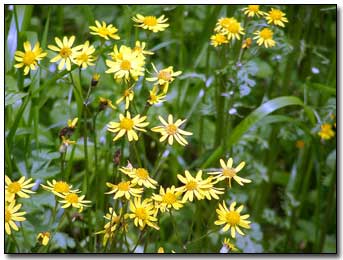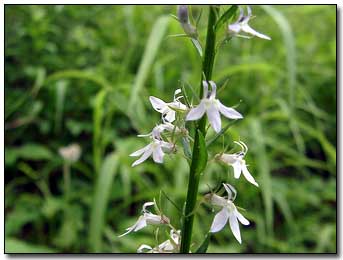|
For the past 55 years, I have been paralyzed from the waist down with only partial
use of my right arm. This has not really prevented me from a "normal" life, and I
retired after almost thirty years of teaching high school sciences. I was never an
athletic type person, so the lack of playing sports never really bothered me. From a
very early age I have always been interested in natural history, but what bothered
me most was that I would never be able to go hiking in the wilderness or other wild
 places. About twenty years ago after a mild heart attack, I began really studying
nature from the seat of my car. Since then I have come to the conclusion that there
is a world of nature just along the side of most roads. I am writing a book, "The
Diary of a Roadside Naturalist", about my experiences, and I have found that some
very rigorous research can be done along the roads simply by observing and
recording.
places. About twenty years ago after a mild heart attack, I began really studying
nature from the seat of my car. Since then I have come to the conclusion that there
is a world of nature just along the side of most roads. I am writing a book, "The
Diary of a Roadside Naturalist", about my experiences, and I have found that some
very rigorous research can be done along the roads simply by observing and
recording.
I hope that my book and my example will cause some other people with my condition to
get out and become nature lovers themselves. The excuse that there is nothing to see
unless one goes into the wilds away from civilization is just not true. Everywhere
one goes there is something of interest to see even in the heart of a city or a
parking lot. The trick is to look for it. Obviously, if one can get to a country
back road, there is much more variety, but most cities have parks, and most of these
parks are very rich in wildlife and flowers.
 One of the best projects for roadside nature study is birds. Bird watching is the
number two outdoor activity in America, second only to gardening. I am very lucky to
have a small lake near my home that is also a wildlife area for hunting. Most of the
roadsides are left unmowed for most of the year, and there is very little traffic.
All that is needed for bird watching is a good field guide, a pair of binoculars,
and a notebook. One of my friends and I began studying this area about ten years ago
and have logged over 200 species. No one in the area ever suspected that there were
so many species possible in this small area. We keep detailed records of the birds
we see and by analyzing our data have a very good idea of the bird population
dynamics of this area.
One of the best projects for roadside nature study is birds. Bird watching is the
number two outdoor activity in America, second only to gardening. I am very lucky to
have a small lake near my home that is also a wildlife area for hunting. Most of the
roadsides are left unmowed for most of the year, and there is very little traffic.
All that is needed for bird watching is a good field guide, a pair of binoculars,
and a notebook. One of my friends and I began studying this area about ten years ago
and have logged over 200 species. No one in the area ever suspected that there were
so many species possible in this small area. We keep detailed records of the birds
we see and by analyzing our data have a very good idea of the bird population
dynamics of this area.
Another excellent project is wildflowers. Again, all that is needed is a good field
guide, a hand lens, and a notebook. Most flowers can be identified, even by an
amateur without having the plant in hand. It is a great mistake to think that one
must be a botanist, an ornithologist, or an entomologist to be able to identify
specimens. Some of the great experts in these fields have had very little formal
training. They simply had an interest and a desire to learn. I keep a list of the
flowers I see in bloom with their dates and have made checklist of several areas
around my home. In one area I have recorded over 200 species of wildflower without
even leaving the car.
The last item for the roadside naturalist is photography. Obviously I will never be
able to creep up on wild animals and get photos of them. Taking close-ups of birds
especially requires much exertion and usually a lot of expensive equipment that must
be carried. Flowers don't run away, and the pictures can be composed at leisure. The
 development of digital cameras has put nature photography within the grasp of
everyone who wants to do it. The macro and zoom capabilities of these cameras make
it possible to get close-ups without crawling along on the ground. While some of the
cameras are expensive, the cost of film is zero, and great photos can be taken even
with inexpensive cameras. One can take shot after shot to get a great picture, and
at the end trash all the other pictures that don't come out the way you want. My
camera is a medium priced brand with an optical zoom of 8X. This gives me a focal
length of 320 mm. It also will focus to about one-half inch in distance. Since it
has an LCD screen, it isn't necessary to hold the camera up to the eye. All that is
needed is to hold the camera out the window and snap away. There are many photo
processing software programs in all price ranges that will enable the user to make
professional quality pictures at home with no darkroom needed. You will "waste" many
pictures, but the cost is zero. I have heard professional photographers say that if
they got one or two good pictures per roll of film they were satisfied!
development of digital cameras has put nature photography within the grasp of
everyone who wants to do it. The macro and zoom capabilities of these cameras make
it possible to get close-ups without crawling along on the ground. While some of the
cameras are expensive, the cost of film is zero, and great photos can be taken even
with inexpensive cameras. One can take shot after shot to get a great picture, and
at the end trash all the other pictures that don't come out the way you want. My
camera is a medium priced brand with an optical zoom of 8X. This gives me a focal
length of 320 mm. It also will focus to about one-half inch in distance. Since it
has an LCD screen, it isn't necessary to hold the camera up to the eye. All that is
needed is to hold the camera out the window and snap away. There are many photo
processing software programs in all price ranges that will enable the user to make
professional quality pictures at home with no darkroom needed. You will "waste" many
pictures, but the cost is zero. I have heard professional photographers say that if
they got one or two good pictures per roll of film they were satisfied!
I hope this article will encourage the disabled or elderly to realize that there is
a whole world of nature right at hand. All that is needed is an interest in natural
things. Why spend all your time watching nature shows on TV when the real thing is
just a trip outdoors?
| 
